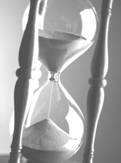
题目列表(包括答案和解析)
| |||||||||||||||||||||||||||||||||||||||||||||
| A.Green Roofs | B.Green Cities |
| C.Reducing and Recycling | D.Environmental Protection |
| A.Brazil | B.Singapore | C.China | D.Mexico |
| A.people are encouraged to grow plants on their roofs |
| B.special lanes are designed to solve traffic jams |
| C.people make good use of solar and wind energy |
| D.people are provided with a pleasant place to live |
| A.giving examples | B.explaining reasons |
| C.listing suggestions | D.showing different opinions |
Story 1

In America in 1940,the twin boys went to live with two different families almost as soon as they were born.The two brothers never saw each other again until1979,when they met by chance at a party.When they started talking to each other,they discovered some amazing similarities(相似处).First,they found out that they both enjoyed making things out of wood.Later on,they discovered that they had both married women called Linda,and that they both had one son whose first and middle names were James and Alan.Besides,both brothers had called their dogs by the same name-Toy.As if that wasn’t enough,they also found out that they both took their family holiday at the same place every year.
Story 2

In 1996,a Filipino woman called Mrs. Jimena told other people that her three children could breathe underwater like fish.Mrs. Jimena said that her children had three small holes on the sides of their necks below each ear,and that these were like the gills(鱼鳃)on fish.Mrs. Jimena said that she didn’t know how to swim and that her children were just starting to learn. Her family lives in a mountain village far from the sea. According to Mrs. Jimena,the holes in her children’s necks become larger when they are underwater, allowing them to stay underwater for up to six minutes.
Story 3

On 11th October,1994,a 10-year-old English girl called Vicky Willmore told her mother that she had a headache.Soon afterwards,Vicky began writing in mirror image(镜像).She wrote letters and numbers either upsidedown or back-to-front.Although she could read what she wrote,no one else could.She was examined by different doctors,but none of them could find out what was wrong with her.Vicky became very upset,and soon stopped reading and writing altogether.Instead she started watching TV all the time.On 27th ,September 1995,Vicky was watching her favourite football team,Manchester United,play on television.When the team scored a goal,she became so excited that she jumped out of her seat and fell backwards,hitting her head on a coffee table.The next day,Vicky could read and write properly again.
1.The twin brothers didn’t meet each other until _________.
A.1940 B.1979 C.1994 D.1996
2.The twin brothers_______.
A.grew up in two different families
B.didn’t have any similarities at all
C.had two sons named James and Alan
D.didn’t like making things out of wood
3.Mrs Jimena’s children could stay underwater for up to 6 minutes because ________.
A.their mother was the best swimmer
B.their village was close to the sea
C.they had holes like gills below ears
D.they bad gills like fish in their necks
4.The 10-year-old English girl changed her proper writing habit _______.
A.soon after she had a headache one clay
B.while she was watching a football match
C.when she hit her head on a coffee table
D.as soon as she stopped reading and writing
5.From the third story we know that ___________.
A.Vicky wrote backwards for nearly three years
B.doctors didn’t know what was wrong with Vicky
C.hitting one’s head can make him write backwards
D.watching football on television can cause trouble
6.This passage consists of three __________stories.
A.traditional B.historical C.frightening D.amazing
How could we tell time if there were no watches or clocks anywhere in the world?
The sun was probably the world’s first “clock”, except in the far north, where the Eskimos (爱斯基摩人) live.There, it’s dark most of the winter, and light most of the summer.But in most of the world, people have used the sun fooday, if you don’t have a clock that shows time, you still know that when the sun shines, it’s day, and when it’s dark, it’s night.The sun can not only tell you whether it’s day or night but also it’s morning, noon, or afternoon.When the sun is almost directly overhead, it’s noon.

People who live near the sea from the tides.In the daytime, for about six hours, the water rises higher and higher on the beach.And then it about six hours.The same thing happens again at night.There are two high tides
and two low tides every 24 hours.
Seamen on a ship tell time by looking at the moon and the stars.The whole sky is their clock.
In some places in the world the wind comes up at about the same
time every day or changes direction or stops blowing.In these places
the wind can be the clock.
A sand clock is an even better clock.If you had fine dry sand in a
glass shaped like the one in the sand will take another hour to go back again.
1.From the passage we can know there are _____ ways to tell time besides the clock and watch.
A.3 B.4 C.5 D.7
2.The Eskimos in the far north can’t use the sun for a clock because ______.
A.they know very little about the sun
B.the sun there never goes down in winter
C.it’s too cold for them to go out to watch the sun
D.it has long day and long light summers
3.The underlined word “tide” in the passage means _______.
A.洋流 B.潮汐 C.海啸 D.波浪
4.In which page of the newspapers probably read this passage?
A.News. B.Science. C.Advertisement D.Sports.
5.What’s the best title for the passage?
A.Different Ways to Tell Time B.How the Clock Was Invented
C.The Development of the Clock D.A Useful Machine to Tell Time
湖北省互联网违法和不良信息举报平台 | 网上有害信息举报专区 | 电信诈骗举报专区 | 涉历史虚无主义有害信息举报专区 | 涉企侵权举报专区
违法和不良信息举报电话:027-86699610 举报邮箱:58377363@163.com